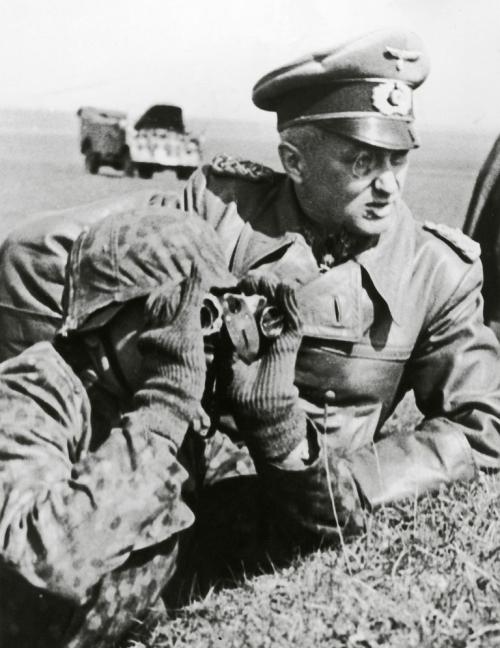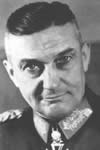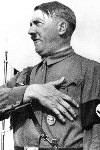Our Searchlight on the War
The War Illustrated, Volume 3, No. 53, Page 250, September 6, 1940.
French Ships to be Demobilized
After France surrendered there arose problems concerning the future of three French naval vessels – the aircraft carrier "Béarn", the cruiser "Emile Bertin", and the training cruiser "Jeanne D'Arc" – which were in Western Hemisphere waters at Martinique and Guadeloupe. Discussions took place between the U.S. Administration, the French Embassy in Washington, the Consulate at Martinique, and the French Commander of the "Emile Bertin", who felt that he must obey orders and return to France, even at the cost of fighting. Agreement was reached, and the three French ships are to be decommissioned. There remains the problem of the 100 American 'planes aboard the "Béarn". Britain claims them because she assumed liability for all orders of the Anglo-French Purchasing Commission. At any rate, they are out of Hitler's reach.
Bigger and Better Bombers
Twice as powerful as those at present in use and carrying far greater bomb loads, bristling with gun positions, very fast, gigantic in size yet easy to handle and manoeuvre – such is the verdict of pilots who have tested the new secret British bombers shortly coming into service against the enemy. In addition to the impressive new model the Wellington has been provided with a new type of engine, similar to that fitted to fighter machines, which enables the former speed of 260 miles per hour to be considerably exceeded.
Twisting the Rope
According to the "New York Times" Marshal Pétain admits that Hitler is putting pressure on the Vichy Government. "The Germans hold the rope and twist it whenever they consider that the accord is not being carried out." Every day brings new evidence of the arch-bully's policy. On August 21 a decree was issued by General Weygand dismissing 180 French Army commanders who had taken part in operations against the Germans. The following day, General de Gaulle, announced that "800 aeroplanes, supremely essential for the defence of France in Africa, are leaving Morocco, Algeria and Tunisia for Istres, there to be placed at the disposition of the enemy." Squads of the Gestapo now at Marseilles give orders conflicting with those issued from Vichy. Some 50,000 Germans from the Ruhr and Rhineland have arrived in the French capital in order to be out of reach of R.A.F. bombing raids. So proceeds the "honourable peace as between soldiers" foretold by Marshal Pétain.
Canadian Destroyer to the Rescue
When the "Arandora Star", en route to Canada with many hundreds of German and Italian internees, was torpedoed by a U-boat on July 2, 1940, the Canadian destroyer "St. Laurent" (Commander H. G. de Wolf, R.C.N.) was 84 sea miles away. She covered the distance in under three hours, and, guided by a Sunderland flying-boat to where the survivors were crowded in lifeboats or clinging to wreckage, engaged in the work of rescue until the flying-boat reported that no more survivors were in sight. Then with more than 850 survivors on board the "St. Laurent" set course for a Scottish port, where she arrived 17 hours later – at 6.30 a.m. on July 3. The 850 survivors were crammed in somehow, and on their way to safety were given a breakfast of porridge and one egg each. Cocoa and soup were also provided, and those people who looked as if they needed it were given a tot of rum.
'Sealion' Survives Depth Charges
When the British submarine "Sealion" (see Vol. II, pp. 504) returned to her base in August 1940, Commander B. Bryant had a thrilling story to tell. When off the Norwegian coast the "Sealion" was about to torpedo a 9,000-ton German merchantman, Suddenly the convoy of which she was a part changed course and one ship came straight for the submarine. There was a grinding, crashing shock as "Sealion's" periscope and hull were struck a glancing blow. Then came an hour of depth charging, but the little vessel survived it all. After a time she was surfaced and her crew found the heavy metal masts and the periscope shafts swinging wildly. All through the night they worked to make fast the wreckage, but perhaps the most hazardous job fell to Chief Petty Officer R. Clark, who fitted up an emergency wireless aerial.
'Criminals Trained for Murder'
The arming of the Home Guard with rifles provoked violent attacks in the Nazi press and on the Berlin radio. "The British Government is releasing criminals from prison and training them for murder", said the announcer bitterly. "Every Englishman who agrees to act as a franc-tireur is digging his own grave. Churchill is leading the British civil population on a fatal path." How much more will be resented the decision to equip certain units of the Home Guard with light machine-guns purchased in America, with millions of rounds of ammunition.
Previous and next article from Our Searchlight on the War
Our Searchlight on the War
Splinters Mystery Solved Heavy fragments of grooved steel, some of them still red-hot, were picked up in two areas on the South-East Coast following two heavy explosions on August 13. The explosions,
Our Searchlight on the War
Eyes and Ears of the R.A.F. In future, by approval of the King, the Observer Corps is to be known as the Royal Observer Corps, in recognition of valuable services rendered over a number of years. T
Index
Previous article
Dortmund-Ems Canal V.C.
The first bombing of the Dortmund-Ems Canal, one of Germany's great inland waterways, was announced on July 17, and Flight Lieutenant Learoyd was engaged in these operations. The feat for which he was
Next article
V.C. of a Broken Bridge
The Victoria Cross has been awarded to 2nd Lieut. R. W. Annand, Durham Light Infantry, for most conspicuous gallantry on May 13-16, 1940, when the platoon under his command was on the south side of th






